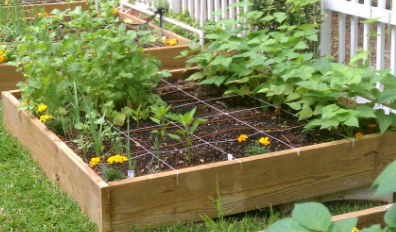Late July and August: A Short Guide to Planting Vegetables in the Peak of Summer

Carl M. Ambrose, Jr.
Late July and August signify the peak of the summer season, a time when gardeners are reaping the rewards of their earlier planting efforts. However, there is still ample opportunity to grow fresh and plentiful vegetables in your garden. This brief guide gives some vegetables to plant during the late July and August period, ensuring a plentiful harvest well into the fall. As the economic climate changes and prices continue to rise with no end in site, many or turning to small gardens to help feed their families and save money in the process.
The Ideal Vegetables for Late July and August Planting
Tomatoes: A Late Summer Delicacy
Tomatoes undeniably hold a prominent place in many gardens as a late summer staple. With their vibrant hues, succulent flesh, and rich flavors, they are a cherished favorite among both gardeners and culinary connoisseurs. When engaging in tomato planting during late July and August, it is advisable to select varieties with shorter growing seasons, such as Early Girl or Celebrity. These cultivars typically reach maturity in approximately 50 to 60 days, ensuring the enjoyment of homegrown tomatoes before the onset of the first frost.
Zucchini: A Versatile Option
Zucchini is an exceptionally versatile vegetable that flourishes amidst the late summer heat. Renowned for its rapid growth and abundant yields, it serves as an excellent choice for gardeners seeking a prolific crop. Directly sow zucchini seeds into the soil, providing them with sufficient space to spread out. Regular harvesting is imperative to prevent the fruits from growing excessively large if left unattended.
Cucumbers: Crisp and Invigorating
Cucumbers offer a refreshing addition to summer salads and are an ideal choice for late summer planting. Thriving in warm temperatures, they are perfect for cultivation in July and August. Opt for cucumber varieties labeled as “burpless” or “pickling,” catering to your individual preferences. Utilizing trellises for the cucumber plants can conserve space and promote healthier growth.
Beans: Nutritious and Easily Cultivated
Beans stand as a favored selection among gardeners owing to their nutritional value and ease of cultivation. For late summer planting, it is recommended to opt for bush beans, which mature relatively quickly. Varieties such as Provider or Contender can be directly sown into the soil and will be ready for harvest within approximately 50 to 60 days. Revel in the abundance of freshly harvested beans throughout the late summer and early fall seasons.

The Only Book You Need to Become Self-Sufficient on ¼ Acre.
100+ tips to save money that you are paying needlessly right now
GET YOUR COPY OF “THE SELF-SUFFICIENT BACKYARD CLICK HERE
Peppers: Spicy or Sweet
Peppers come in an extensive array of flavors and heat levels, imparting a burst of color and taste to any culinary creation. Whether your preference lies with sweet bell peppers or fiery jalapenos, late summer presents an opportune time to cultivate these delightful additions. Peppers thrive in warm temperatures, and their fruits continue to ripen until late fall. Consider the use of row covers or plastic mulch to provide additional warmth and extend the growing season.
Lettuce and Greens: A Refreshing Change
While numerous vegetables favor the warmth of late summer, lettuce and other leafy greens prefer slightly cooler temperatures. Planting lettuce varieties such as Butterhead or Romaine during late July and August enables the enjoyment of a crisp and freshly harvested yield during the milder days of early fall. Additionally, incorporating the growth of spinach, arugula, and kale provides a diverse assortment of nutritious greens.
Carrots: Sweet and Crisp
Carrots exemplify a versatile root vegetable, suitable for a range of dishes, from salads to stir-fries. Late summer planting proves ideal for carrots, as the flavors intensify amidst cooler temperatures. Opt for carrot varieties with shorter maturity periods, such as Nantes or Chantenay. Directly sow the seeds into well-drained soil, ensuring consistent moisture for optimal growth.
Late July and August present a unique window for gardeners to continue cultivating and harvesting fresh vegetables. By selecting the right crops, providing adequate care, and implementing proven gardening techniques, a successful late summer and fall harvest is within reach. Whether savoring the vibrant colors of ripe tomatoes or relishing the crispness of freshly picked cucumbers, the rewards of late summer gardening are profoundly satisfying. So gather your gardening tools, choose your favorite vegetables, and prepare to embrace the abundant harvest that late summer.
Open Seed Vault 15,000 Heirloom Seeds Non GMO Organic for Planting Vegetables & Fruits (32 Variety Pack) – Survival Gear Food, Gardening Gifts, Emergency Supplies – Premium Quality, High Yield Produce

